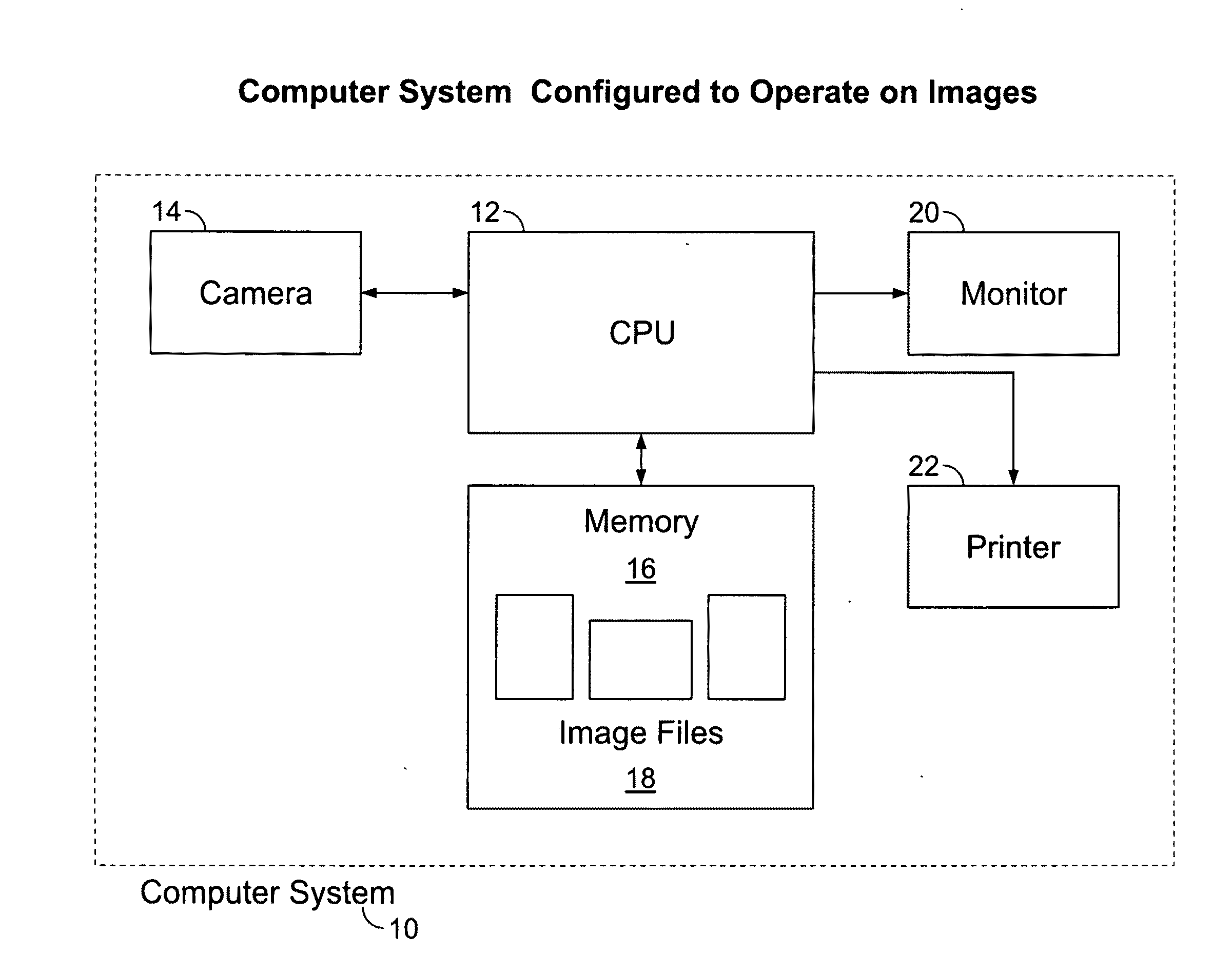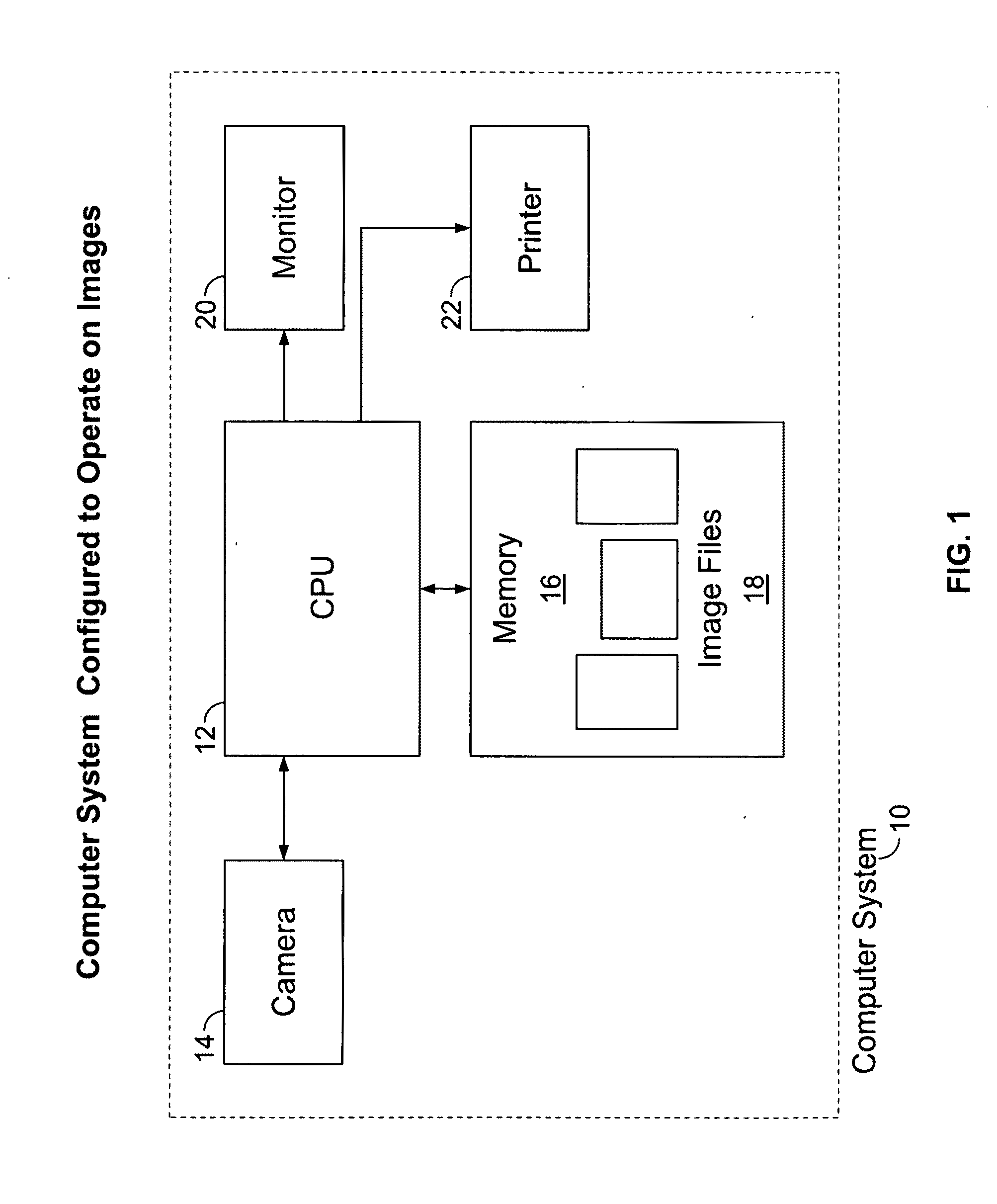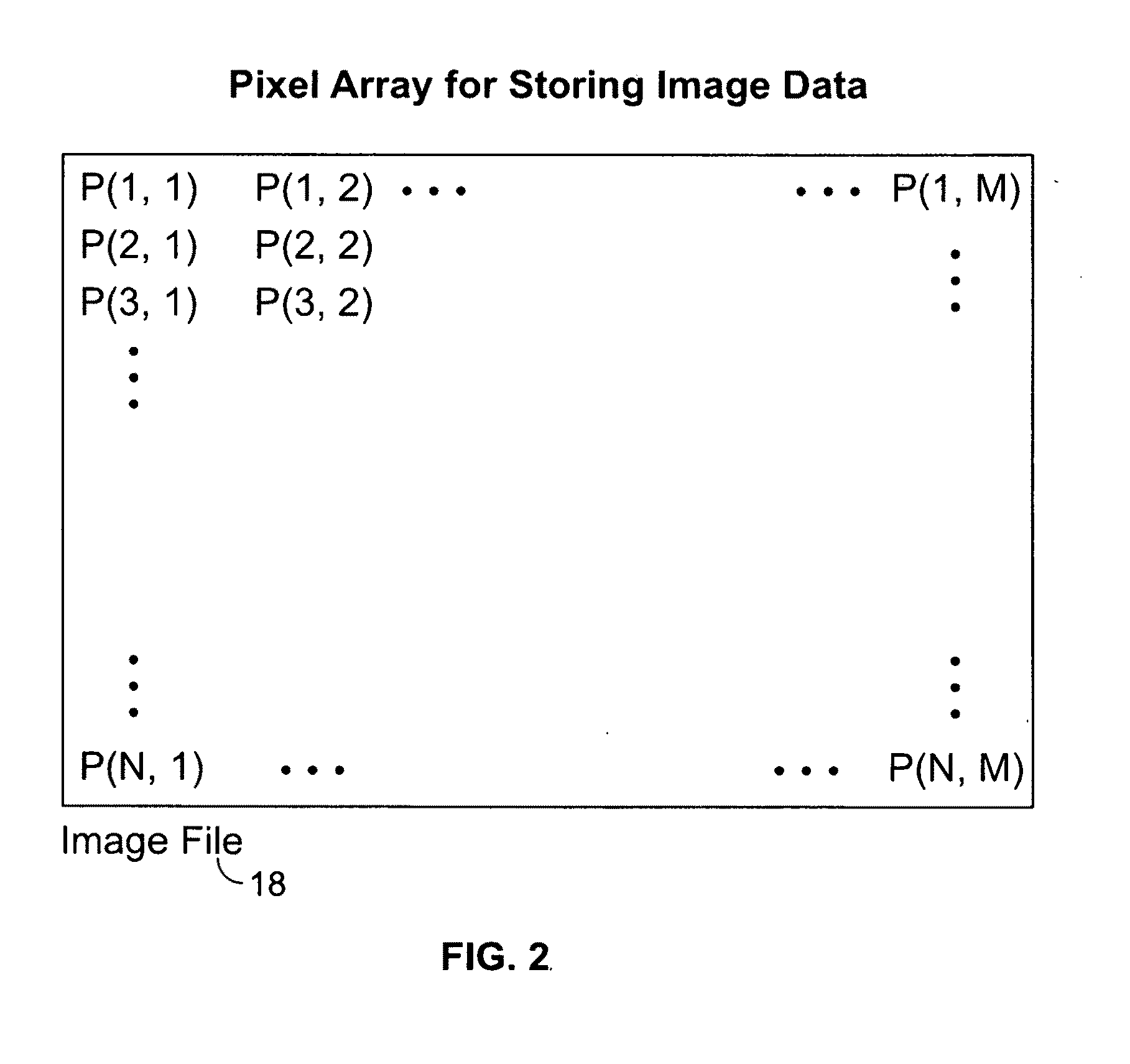Image segregation system with method for handling textures
a texture and image segregation technology, applied in the field of images, can solve problems such as persistent challenges to scientists, and achieve the effect of accurately identifying and separating illumination
- Summary
- Abstract
- Description
- Claims
- Application Information
AI Technical Summary
Benefits of technology
Problems solved by technology
Method used
Image
Examples
Embodiment Construction
[0032]Referring now to the drawings, and initially to FIG. 1, there is shown a block diagram of a computer system 10 arranged and configured to perform operations related to images. A CPU 12 is coupled to a device such as, for example, a digital camera 14 via, for example, a USB port. The digital camera 14 operates to download images stored locally on the camera 14, to the CPU 12. The CPU 12 stores the downloaded images in a memory 16 as image files 18. The image files 18 can be accessed by the CPU 12 for display on a monitor 20, or for print out on a printer 22.
[0033]Alternatively, the CPU 12 can be implemented as a microprocessor embedded in a device such as, for example, the digital camera 14 or a robot. The CPU 12 can also be equipped with a real time operating system for real time operations related to images, in connection with, for example, a robotic operation or an interactive operation with a user.
[0034]As shown in FIG. 2, each image file 18 comprises an n X m pixel array. ...
PUM
 Login to View More
Login to View More Abstract
Description
Claims
Application Information
 Login to View More
Login to View More - R&D
- Intellectual Property
- Life Sciences
- Materials
- Tech Scout
- Unparalleled Data Quality
- Higher Quality Content
- 60% Fewer Hallucinations
Browse by: Latest US Patents, China's latest patents, Technical Efficacy Thesaurus, Application Domain, Technology Topic, Popular Technical Reports.
© 2025 PatSnap. All rights reserved.Legal|Privacy policy|Modern Slavery Act Transparency Statement|Sitemap|About US| Contact US: help@patsnap.com



